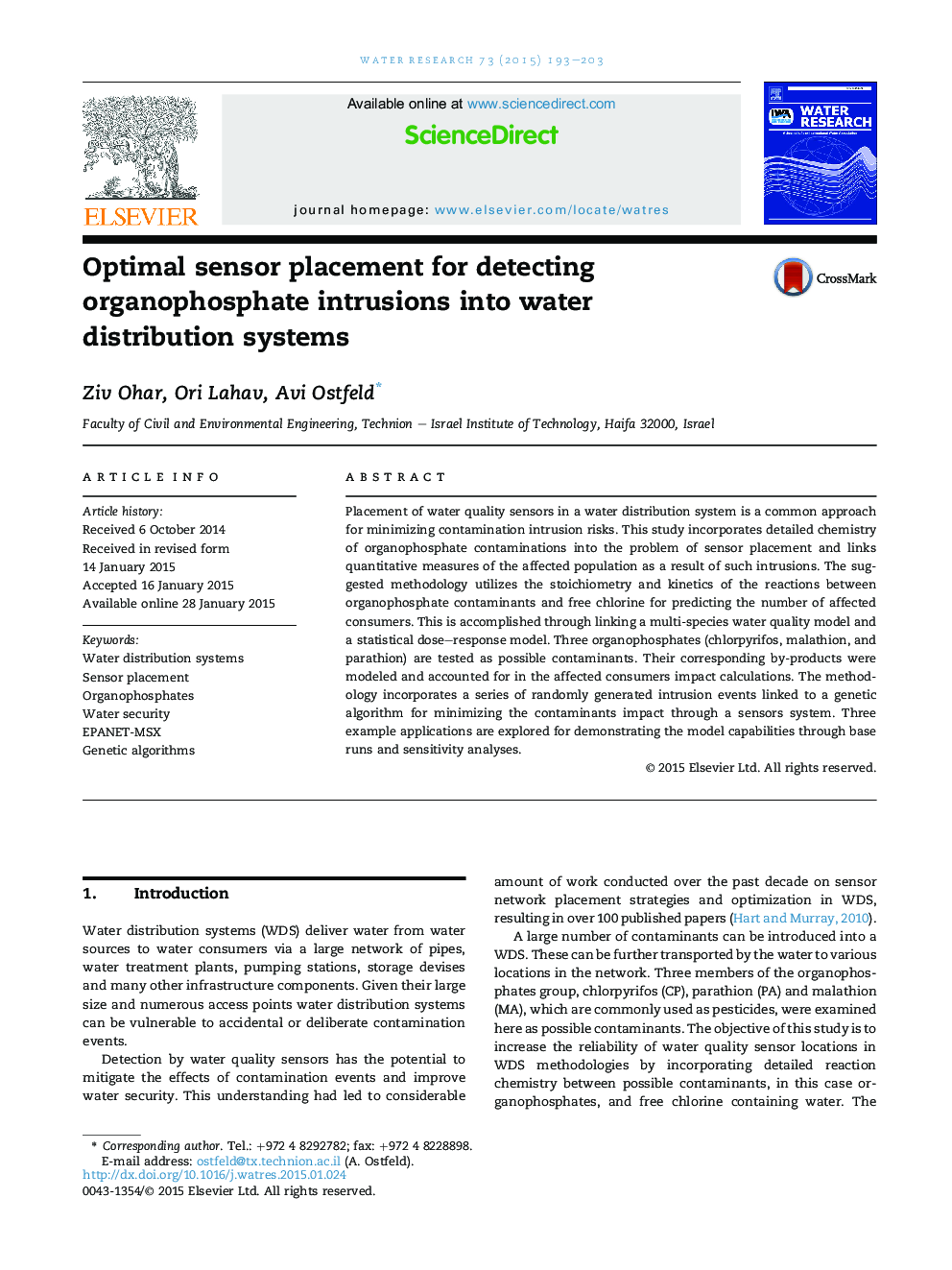| Article ID | Journal | Published Year | Pages | File Type |
|---|---|---|---|---|
| 4481239 | Water Research | 2015 | 11 Pages |
•Inclusion of complex chemistry simulations of organophosphates.•Sensor placement for detecting complex chemical contamination intrusions.•Inclusion of by-products toxicity impacts in sensor placement modeling.•An EPANET-MSX – genetic algorithm multispecies optimization model.
Placement of water quality sensors in a water distribution system is a common approach for minimizing contamination intrusion risks. This study incorporates detailed chemistry of organophosphate contaminations into the problem of sensor placement and links quantitative measures of the affected population as a result of such intrusions. The suggested methodology utilizes the stoichiometry and kinetics of the reactions between organophosphate contaminants and free chlorine for predicting the number of affected consumers. This is accomplished through linking a multi-species water quality model and a statistical dose–response model. Three organophosphates (chlorpyrifos, malathion, and parathion) are tested as possible contaminants. Their corresponding by-products were modeled and accounted for in the affected consumers impact calculations. The methodology incorporates a series of randomly generated intrusion events linked to a genetic algorithm for minimizing the contaminants impact through a sensors system. Three example applications are explored for demonstrating the model capabilities through base runs and sensitivity analyses.
Graphical abstractFigure optionsDownload full-size imageDownload high-quality image (101 K)Download as PowerPoint slide
